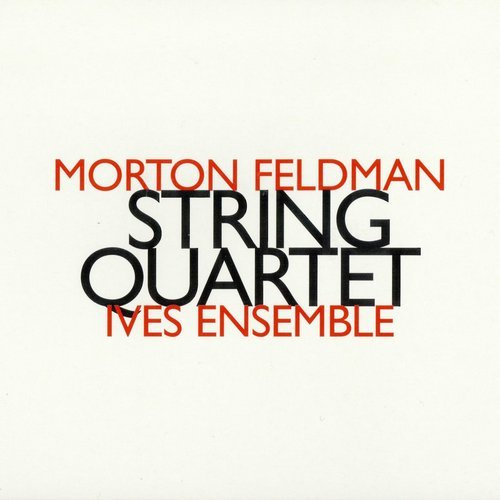Ives Ensemble - Morton Feldman: String Quartet (2007)

Artist: Ives Ensemble
Title: Morton Feldman: String Quartet
Year Of Release: 2007
Label: hat[now]ART
Genre: Classical
Quality: FLAC (image+.cue,log,scans)
Total Time: 76:57
Total Size: 332 Mb
WebSite: Album Preview
Tracklist: Title: Morton Feldman: String Quartet
Year Of Release: 2007
Label: hat[now]ART
Genre: Classical
Quality: FLAC (image+.cue,log,scans)
Total Time: 76:57
Total Size: 332 Mb
WebSite: Album Preview
Morton Feldman (1926-1987)
[1]-[3] String Quartet (1979)
Performers:
Ives Ensemble
Josje ter Haar, violin
Janneke van Prooijen, violin
Ruben Sanderse, viola
Job ter Haar, cello
There's always been a crossover appeal among avant, jazz artists with renegade contemporary classical composers. As with various musical forms, and perhaps life in general, rules are sometimes meant to be broken. String Quartet features a 1979-penned composition by Morton Feldman, recorded by the highly-regarded Dutch group known as the [Charles] Ives Ensemble.
Feldman's minimalist tendencies come to fruition, but there's also an element of shock and incident-driven variations amid ever-so-slight tonal variations that surface within unusual circumstances. Enveloped by the quartet's pizzicatos and cyclical ostinato frameworks, the music's delicate mosaics of sound surge forward with the impetus of medium-paced footsteps. Feldman's composition is also built upon polytonal and contrapuntal episodes that are occasionally interrupted with harsh overtones and mood-drenched imagery. However, the music iterated during this seventy-six minute piece contains reference points or perhaps timestamps.
The composition also includes a few abruptly arranged scare tactics via the unit's brazen choruses and ruggedly executed staccato lines. Regardless, Feldman's thought processes and sensibilities are aggressively conveyed within the context of this performance. On a side-note, many forward-thinking jazz and improvising artists derive inspiration from the likes of Feldman, Charles Ives and Milton Babbit, among others. They have adopted some of the paradigms set forth, and utilize these elements as a basis for composition and expressionism. This work presents quite a few subtly engineered complexities. At times the sum of the parts communicates a set of movements that might defy core music theory principles and logic. But these facets signify many of the fascinating propositions that underscore this extended work.
Feldman's minimalist tendencies come to fruition, but there's also an element of shock and incident-driven variations amid ever-so-slight tonal variations that surface within unusual circumstances. Enveloped by the quartet's pizzicatos and cyclical ostinato frameworks, the music's delicate mosaics of sound surge forward with the impetus of medium-paced footsteps. Feldman's composition is also built upon polytonal and contrapuntal episodes that are occasionally interrupted with harsh overtones and mood-drenched imagery. However, the music iterated during this seventy-six minute piece contains reference points or perhaps timestamps.
The composition also includes a few abruptly arranged scare tactics via the unit's brazen choruses and ruggedly executed staccato lines. Regardless, Feldman's thought processes and sensibilities are aggressively conveyed within the context of this performance. On a side-note, many forward-thinking jazz and improvising artists derive inspiration from the likes of Feldman, Charles Ives and Milton Babbit, among others. They have adopted some of the paradigms set forth, and utilize these elements as a basis for composition and expressionism. This work presents quite a few subtly engineered complexities. At times the sum of the parts communicates a set of movements that might defy core music theory principles and logic. But these facets signify many of the fascinating propositions that underscore this extended work.



![Tomasz Stanko - Unit (Polish Radio Sessions vol. 2/6) (2025) [Hi-Res] Tomasz Stanko - Unit (Polish Radio Sessions vol. 2/6) (2025) [Hi-Res]](https://www.dibpic.com/uploads/posts/2025-12/1765796826_cover.jpg)

![Coco Chatru Quartet - Lost Christmas (2025) [Hi-Res] Coco Chatru Quartet - Lost Christmas (2025) [Hi-Res]](https://www.dibpic.com/uploads/posts/2025-12/1765719561_coco-chatru-quartet-lost-christmas-2025.jpg)


